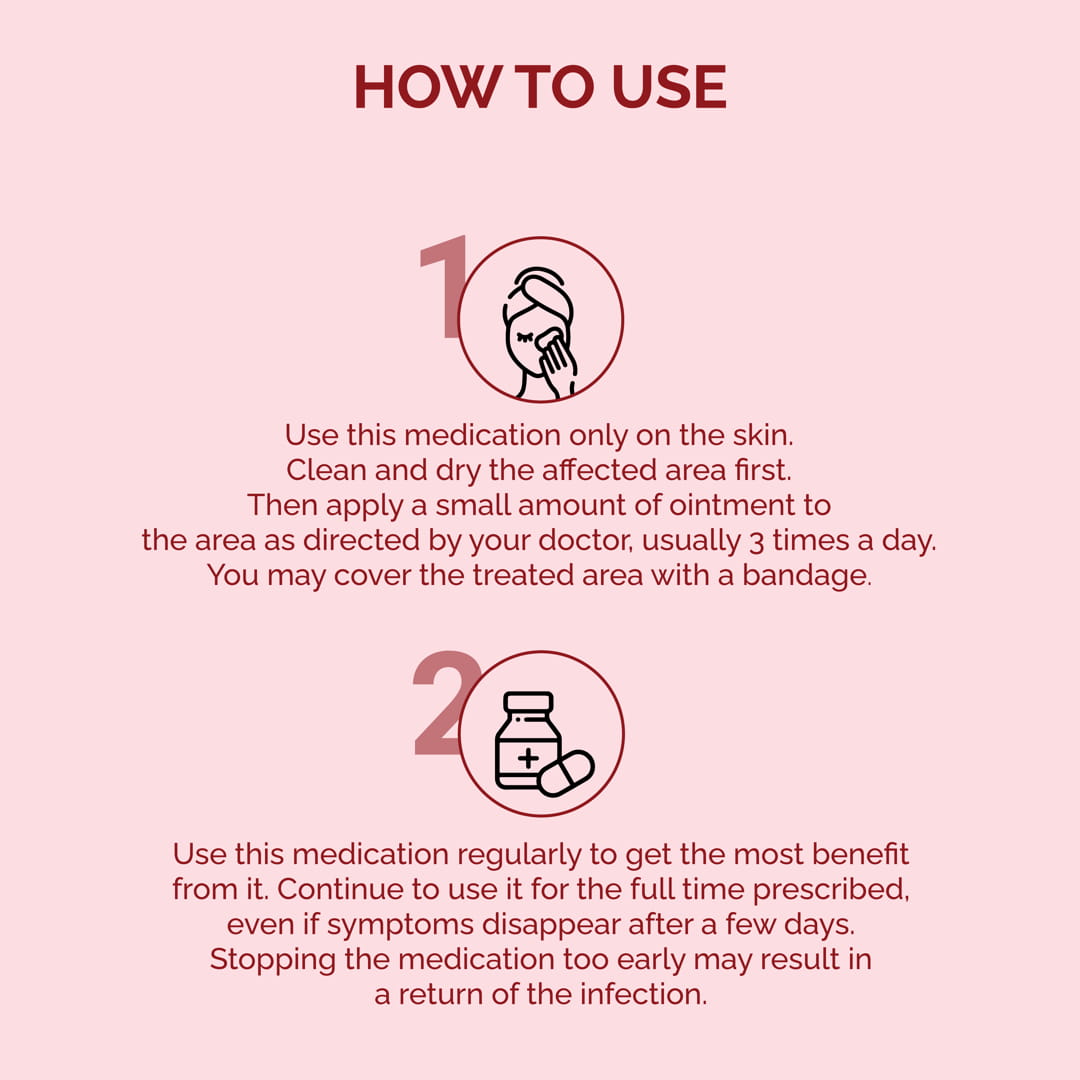









Mupirone ointment with mupirocin, for anti bacterial treatment
- Rs. 113.00 INR
Rs. 113.00 INR- Rs. 113.00 INR
- Unit price
- per
Couldn't load pickup availability
Mupirocin is used to treat certain skin infections (such as impetigo). It is an antibiotic. It works by stopping the growth of certain bacteria. Mupirocin topical (for use on the skin) is used to treat skin infections such as impetigo or a “Staph” infection of the skin.
1. Antibacterial action: Mupirocin is active against certain types of bacteria, particularly Staphylococcus aureus and Streptococcus pyogenes. It works by inhibiting the synthesis of proteins necessary for bacterial growth and replication, thus killing the bacteria or preventing their growth.
2. Indications: Mupirocin ointment is commonly used to treat skin infections caused by bacteria, such as impetigo (a contagious skin infection characterized by red sores or blisters that can ooze or crust) and secondary skin infections resulting from cuts, scratches, or other skin irritations.
3. Application: Mupirocin ointment should be applied topically to the affected area of the skin as directed by your healthcare professional. It's important to thoroughly clean and dry the area before applying the ointment. Follow the instructions provided by your healthcare professional or as indicated on the medication label.
4. Duration of use: The duration of mupirocin anti bacterial ointment use will depend on the specific infection being treated. It's important to use the ointment for the full duration prescribed by your healthcare professional, even if the symptoms improve before completing the entire course. This helps to ensure the complete eradication of the bacteria and prevent the recurrence of the infection.
5. Side effects: Common side effects of mupirocin anti bacterial ointment are usually mild and may include skin irritation, redness, itching, or stinging at the application site. If you experience any severe or persistent side effects, it's important to consult your healthcare professional.
It's important to use anti bacterial Mupirocin ointment as directed and only for the indication prescribed by your healthcare professional. If you have any concerns or questions about using Mupirocin ointment or if your symptoms worsen or do not improve, it's best to consult with your healthcare provider for further evaluation and guidance.
Then apply a small amount of ointment to the area as directed by your doctor, usually 3 times a day. You may cover the treated area with a bandage.
Use this medication regularly to get the most benefit from it. Continue to use it for the full time prescribed, even if symptoms disappear after a few days. Stopping the medication too early may result in a return of the infection.
Mild burning or stinging after using this medication may occur. If you have severe burning, stinging, or irritation, stop using this medication and tell your doctor right away. This medication may rarely cause a severe intestinal condition (Clostridium difficile-associated diarrhoea) due to a type of resistant bacteria.
Safety advice:
Before using this medication, discuss with your doctor or pharmacist your medical history, especially of any kidney related issues.
Before having surgery, discuss with your doctor or dentist about all the products you use (including prescription drugs, non-prescription drugs, and herbal products).
Avoid using this medication around your eyes, nose, mouth, or on large areas of damaged or broken skin unless otherwise directed by your doctor. If you accidentally get it in your eyes, nose, or mouth, rinse well with plenty of water.
Related Products
- Rs. 113.00 INR
Rs. 113.00 INR- Rs. 113.00 INR
- Unit price
- per
- Rs. 113.00 INR
Rs. 113.00 INR- Rs. 113.00 INR
- Unit price
- per
- Rs. 113.00 INR
Rs. 113.00 INR- Rs. 113.00 INR
- Unit price
- per
- Rs. 113.00 INR
Rs. 113.00 INR- Rs. 113.00 INR
- Unit price
- per
- Choosing a selection results in a full page refresh.










